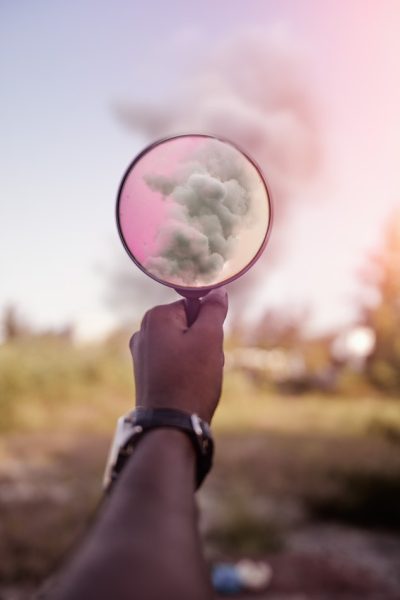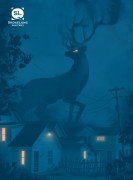“Blemish” has this beautiful movement between a memory from the narrator’s youth and the present, creating a darkly intriguing exploration of romance and relationships. Can you share your inspiration for this story?
I’m happy to say this story began in Kathy Fish’s workshop. The question implied in the first sentence wouldn’t leave me. What would this character do for love and approval? How much was she willing to to hurt herself? I was also drawing from a time in my life when I was younger and very attached to another girl. In our last year together, she wanted us to do a blood pact and it was like this form of magic that promised love, a way to steel myself against the bad things happening around me. I remember her pressing the knife to my wrist, and I pulled away at the last second. Eventually we stopped talking. I wondered how things might have been different had I said yes.
You recently won the Nimrod International Journal’s 2017 Katherine Anne Porter fiction contest for your story “Toguro.” Congratulations! The piece is much longer, and just as remarkably detailed. What’s your process like for writing flash fiction versus a short story? Any similarities? Any differences?
Thank you so much for reading! “Toguro” (蜷局 meaning coil in Japanese) has since expanded into a novella in progress, and it explores themes that come up in my shorter work: identity in diaspora, womanhood, love and alienation. To be honest, I am a hilariously slow writer when it comes to chapters and short stories. I tend to write in fragments, just a little at a time. But with flash, I need to see it through from the first line to wherever that takes me—better yet, if I end up surprising myself along the way. That’s something I picked up in Kathy’s workshops: “Don’t overthink, and allow whatever comes to you without judgment.”
Who are some of your go-to authors? Who are you currently reading?
Books that I go back to: Signs Preceding the End of the World by Yuri Herrera; Bone Confetti by Muriel Leung; Black Cloud by Juliet Escoria; Binary Star by Sarah Gerard; and anything Thirii Myo Kyaw Myint and Laura van den Berg have ever written. Right now I’m re-reading Ananda Devi’s Eve Out of Her Ruins, and my god, it is brilliant. I want to live in Eve’s voice.
I read that you’re also a painter. Is there ever a connection between your visual and written art?
Oh, definitely. I have a fixation on bodies both in my visual art and writing, and gesture drawings are my favorite thing in the world to make. You’re not just trying to capture the direction and movement of a figure in a minute or less, but the emotional impulse behind that movement, which I think is a principle that can be applied to flash fiction as well. A quote from Kimon Nicolaïdes: “Think more of the meaning than of the way the thing looks.” That said, I love surrealism. Some artists whose paintings speak to me deeply are Katty Huertas, Roby Dwi Antono, Joanne Nam, Eric Fortune, and Remedios Varo. I love it when faces are heavily textured or when they’re dreamy and precise. Sometimes the human body does not appear human at all. Sometimes it’s terrifying. All this feels emotionally true to how I view my own self. Even when I don’t intend to, I am always investigating that relationship when I draw and write.
Fill in the list below with your top five movies/books/music/art that mean the most to you.
- El Laberinto del Fauno
This movie is aching and so beautiful. It’s a profound influence on me.
- Sóley’s album, Ask the Deep
I return to this album every time I write. It’s the ideal horror soundtrack when you’re writing about things that frighten you (and that “thing” is often yourself).
- Juan Rulfo’s Pedro Páramo
This is the novel that gave me permission to write about reality as if I were undoing it.
- Fuco Ueda’s paintings
I’m fascinated by how she paints the natural world. There is a woman buried in a coral bed. A woman spooning fire into her mouth. A woman getting force-fed spider lilies and a woman with eels swimming through her hair. There are so many animals. In her earliest work there are these devastating portraits of trauma within the human world, and maybe I’m projecting, but I can’t help but see the animals touching these girls as a form of love.
- Laura van den Berg’s first collection, What the World Will Look Like When All the Water Leaves Us. I read this after barely graduating college, feeling so unmoored from my life and my body that I wanted to disappear. It will sound like hyperbole when I say this book saved me. But that’s exactly what it did.


